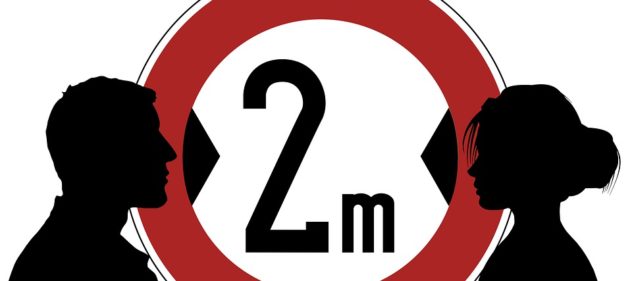Pre-Reading Questions:
- What images come to your mind when you hear the word “virus”?
- Has your daily routine changed because of COVID19?
Vocabulary:
- whether /HWETH-er/
- proven /PROOV-en/
- necessary /NES-uh-ser-ee/
- order /AWR-der/
- maintain /meyn-TEYN/
[conjunction] – (used to refer to one or more possibilities or to express uncertainty) if
Jin is still unsure whether to pursue his acting career or not.
[adjective] – shown to be true
The claims are not yet scientifically proven.
[adjective] – needed in order to achieve a particular result
It took us a month to gather all the necessary materials.
[verb] – if a person in authority orders someone to do something, or orders something to be done, they tell someone to do it
The doctor ordered her to refrain from doing exhausting work for a month.
[verb] – to continue to have
Everyone is expected to help maintain the cleanliness in this area.
Government officials in the United Kingdom are considering whether to relax the two-meter rule of social distance. But is it safe? Let’s look at what science has to say about this.
It is proven that the closer you are to a person infected with the virus, the higher the possibility of acquiring it. The World Health Organization suggests to distance yourself with people for at least one meter, while others go for 1.5 to 2 meters. But aside from distance, it is also important to consider the time you spend in close contact with people. The UK government says that unless necessary, limit the close contact with people if possible.
But where does the two-meter rule of social distancing come from? Surprisingly, this is from a research in the 1930s. When someone coughs or sneezes, the released droplets in the air will evaporate or be pulled down to the ground by gravity. A large part of it would land within two meters. Due to this, scientists list distance and surface contact as factors of transmission.
Recently, scientists are worried if the virus could only be transferred through small drops of liquid. If the coronavirus could also be spread through tiny particles of air, then it would be carried away at farther places. According to the US Centers for Disease Control, it’s still undetermined whether viruses can spread through tiny air particles. Furthermore, it’s not yet sure if viruses that were spread further than 2 meters are still infectious.
The governments in many countries order their citizens to wear face masks to protect against the coronavirus. “In places where social distancing cannot be applied, for example in workplaces, face masks lowers the risks of exposure to viruses. It may also give confidence to workers to go back to their jobs”, said UK Prime Minister Boris Johnson.
Right now, we don’t have the permanent answers to know what exactly is the “safe” distance. Researchers are still looking for ways to find out how viruses can be carried and if they are still harmful once reaching a particular distance. Meanwhile, wearing face masks and maintaining social distance of at least two meters are some of the safety measures one can follow to prevent the spreading of viruses.
It is proven that the closer you are to a person infected with the virus, the higher the possibility of acquiring it. The World Health Organization suggests to distance yourself with people for at least one meter, while others go for 1.5 to 2 meters. But aside from distance, it is also important to consider the time you spend in close contact with people. The UK government says that unless necessary, limit the close contact with people if possible.
But where does the two-meter rule of social distancing come from? Surprisingly, this is from a research in the 1930s. When someone coughs or sneezes, the released droplets in the air will evaporate or be pulled down to the ground by gravity. A large part of it would land within two meters. Due to this, scientists list distance and surface contact as factors of transmission.
Recently, scientists are worried if the virus could only be transferred through small drops of liquid. If the coronavirus could also be spread through tiny particles of air, then it would be carried away at farther places. According to the US Centers for Disease Control, it’s still undetermined whether viruses can spread through tiny air particles. Furthermore, it’s not yet sure if viruses that were spread further than 2 meters are still infectious.
The governments in many countries order their citizens to wear face masks to protect against the coronavirus. “In places where social distancing cannot be applied, for example in workplaces, face masks lowers the risks of exposure to viruses. It may also give confidence to workers to go back to their jobs”, said UK Prime Minister Boris Johnson.
Right now, we don’t have the permanent answers to know what exactly is the “safe” distance. Researchers are still looking for ways to find out how viruses can be carried and if they are still harmful once reaching a particular distance. Meanwhile, wearing face masks and maintaining social distance of at least two meters are some of the safety measures one can follow to prevent the spreading of viruses.
Comprehension Questions:
- Where does the two-meter rule of social distancing come from?
- According to the article, what are the two factors of virus transmission?
- According to WHO, how many meters should people distance themselves from?
- What does the US Centers for Disease Control say about the transmission of viruses?
- What are the safety measures a person can do to prevent spreading viruses?
Discussion Questions:
- Do you think two meters is enough for social distancing? Please explain.
- How do you practice social distancing?
- What is the government doing about the COVID19 pandemic in your country?
- What do you do to help protect yourself from viruses?
- Should the government order everyone to wear face masks? Why or why not?
